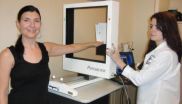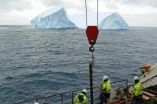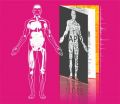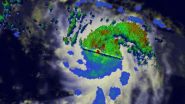(Press-News.org) Viewed as one of the most unfortunate outcomes of breast cancer treatment, lymphedema is characterized by an accumulation of lymph fluid in the interstitial spaces of the affected limb, leading to chronic ipsilateral limb swelling causing psychosocial distress and physical challenges for patients.
Even conservative estimates suggest that 3% of women who have had sentinel lymph node biopsy and 20% of those who have had axillary lymph node dissection may develop lymphedema a year after breast cancer surgery. Two established risk factors for lymphedema are compromised lymphatic drainage and higher body mass index (BMI).
To date, there is little high-quality evidence to support the role of precautionary life-style strategies in reducing these risk factors.
Now, a team of researchers led by Mei R. Fu, PhD, RN, ACNS-BC, FAAN, associate professor of Chronic Disease Management at the New York University College of Nursing (NYUCN) conducted a pilot study to evaluate a patient-centered educational and behavioral self-care program called The Optimal Lymph Flow. The goals of the program were to promote lymph flow and optimize BMI over a 12-month period after breast cancer surgery. Findings of the study entitled "Proactive Approach to Lymphedema Risk Reduction: A Prospective Study" was published first on-line in the Annals of Surgical Oncology (May 2014). They offer initial evidence in support of a shift in the focus of lymphedema care away from treatment and toward proactive risk reduction.
"A patient-centered educational and behavioral program focusing on self-care strategies appears to be an effective way to reduce the risk of lymphedema in survivors of breast cancer," said Dr. Fu. "Based on these study findings, the New York University College of Nursing has established this patient-centered lymphedema risk reduction program as a web-based avatar technology intervention."
Dr. Fu's team enrolled 140 women and followed them for 12 months after surgery for breast cancer. Women who had metastatic breast cancer, a history of breast cancer and lymphedema, or bilateral breast cancer were excluded from the study.
Nearly 60% of patients had undergone axillary lymph node dissection, and approximately 40% had undergone sentinel lymph node biopsy. Although more women in the dissection group had had a mastectomy and chemotherapy than in the biopsy group, both groups were similar in terms of body weight and BMI.
The educational and behavioral program consisted of an assortment of self-care strategies. They included shoulder mobility exercises, muscle-tightening deep breathing, muscle-tightening pumping exercises, and large-muscle exercises to promote lymph flow and drainage (eg, walking, marching, dancing, swimming, yoga, tai chi). In addition, to maintain their preoperative BMI, the women were offered nutritional instructions and encouraged to follow a balanced, portion-appropriate diet.
Limb volume change assessed by an infrared perometer and BMI via a bioimpedance device were outcome measures. Assessments were performed before surgery (baseline) and after surgery (at 2 weeks, 6 months, and 12 months). Lymphedema was defined as ≥ 10% increase in limb volume from baseline in the ipsilateral arm compared with changes in the contralateral arm.
Of the 134 women who completed the study, 97% of patients maintained and improved their preoperative limb volume and BMI at 12 months after surgery. No patients exceeded a 10% increase in limb volume at 12-month follow-up. No patients reported injury or discomfort associated with The Optimal Lymph Flow program at any follow-up visit, according to the investigators.
"The Optimal Lymph Flow Program promotes lymph flow and optimal [BMI] by empowering, rather than inhibiting, how survivors live their lives," said Dr. Fu. "Its underlying premise is 'what to do' rather than 'what to avoid."
These preliminary findings suggest that self-care strategies such as The Optimal Lymph Flow program may prove to be an effective way to reduce the risk of lymphedema in survivors of breast cancer. In fact, nearly 90% of the women studied reported that the program helped them to understand how to reduce their risk of lymphedema as well as dispel their fear and anxiety about developing this side effect. Future research requires a larger study with a randomized, controlled design to confirm the program's overall benefits.
INFORMATION:
ACKNOWLEDGMENT:
This study was supported by the Avon Foundation, National Institute of Health (National Institute on Minority Health and Health Disparities Project No. P60 MD000538- 03), Judges and Lawyers for Breast Cancer Alert, and the Vital Fund. Dr. Judith D. Goldberg was partially supported by NYU School of Medicine Cancer Center Support Grants National Cancer Institute 5 P30 CA16087-32. Its contents are solely the responsibility of the authors and do not necessarily represent the official views of the NIH. The funders had no role in the study design, data collection and analysis, decision to publish, or preparation of the manuscript. Partial findings were presented at the 2012 Breast Cancer Symposium, San Francisco, CA, USA (13 September 2012).
Study Researchers:
Mei R. Fu, PhD, RN, ACNS-BC, FAAN, College of Nursing, New York University, New York, NY, Deborah Axelrod, MD, FACS, Department of Surgery, New York University School of Medicine, New York, NY; NYU Clinical Cancer Center, New York, NY; Amber A. Guth, MD, FACS, Department of Surgery, New York University School of Medicine, New York, NY; 3NYU Clinical Cancer Center, New York, NY; Francis Cartwright, PhD, RN-BC NYU Clinical Cancer Center, New York, NY; Zeyuan Qiu, PhD, New Jersey Institute of Technology, Newark, NJ; Judith D. Goldberg, ScD, Division of Biostatistics, New York University School of Medicine, New York, NY June Kim, MPS, Division of Biostatistics, New York University School of Medicine, New York, NY Joan Scagliola, MS, RN, NYU Clinical Cancer Center, New York, NY; Robin Kleinman, MS, RN, NYU Clinical Cancer Center, New York, NY; and Judith Haber, PhD, RN, APRN-BC, FAAN, College of Nursing, New York University, New York, NY
About New York University College of Nursing:
NYU College of Nursing is a global leader in nursing education, research, and practice. It offers a Bachelor of Science in Nursing, a Master of Arts and Post-Master's Certificate Programs, a Doctor of Philosophy in Research Theory and Development, and a Doctor of Nursing Practice degree. For more information, visit http://www.nyu.edu/nursing.
NYU researchers pilot educational and behavioral program to reduce lymphedema risk
The study, designed to promote lymph flow and optimize body mass index (BMI) after breast cancer surgery, saw a 97% success rate for patients in the program one year after surgery
2014-05-28
ELSE PRESS RELEASES FROM THIS DATE:
A cure for dry eye could be a blink away
2014-05-28
A treatment for dry eye—a burning, gritty condition that can impair vision and damage the cornea—could some day result from computer simulations that map the way tears move across the surface of the eye.
Kara Maki, assistant professor in Rochester Institute of Technology's School of Mathematical Sciences, contributed to a recent National Science Foundation study seeking to understand the basic motion of tear film traversing the eye. "Tear Film Dynamic with Evaporation, Wetting and Time Dependent Flux boundary Condition on an Eye-shaped Domain," published in the journal ...
Antarctic ice-sheet less stable than previously assumed
2014-05-28
The first evidence for massive and abrupt iceberg calving in Antarctica, dating back 19,000 to 9,000 years ago, has now been documented by an international team of geologists and climate scientists. Their findings are based on analysis of new, long deep sea sediment cores extracted from the region between the Falkland Islands and the Antarctic Peninsula. The study in the May 28, 2014 issue of Nature bears witness to an unstable Antarctic ice sheet that can abruptly reorganize Southern Hemisphere climate and cause rapid global sea level rise.
"One of the iceberg events ...
Filling in the gaps on the protein map
2014-05-28
By cataloging over 18,000 proteins, researchers from TUM have produced an almost complete inventory of the human proteome. This information is now freely available in the ProteomicsDB database, which is a joint development of TUM and software company SAP. The database includes information for example on the types, distribution, and abundance of proteins in various cells and tissues as well as in body fluids.
The investigations show that, on the one hand, around 10,000 proteins are concerned with housekeeping processes in many different places. On the other hand, it was ...
Zeroing in on the proton's magnetic moment
2014-05-28
As part of a series of experiments designed to resolve one of the deepest mysteries of physics today, researchers from RIKEN, in collaboration with the University of Mainz, GSI Darmstadt and the Max Planck Institute for Physics at Heidelberg, have made the most precise ever direct measurement of the magnetic moment of a proton.
The work, published in Nature today, seeks to answer the fundamental question of why we exist at all. It is believed that the Big Bang some 13 billion years ago generated equal amounts of matter and antimatter-which annihilate when they collide-and ...
Extensive cataloging of human proteins uncovers 193 never known to exist
2014-05-28
Striving for the protein equivalent of the Human Genome Project, an international team of researchers has created an initial catalog of the human "proteome," or all of the proteins in the human body. In total, using 30 different human tissues, the team identified proteins encoded by 17,294 genes, which is about 84 percent of all of the genes in the human genome predicted to encode proteins.
In a summary of the effort, to be published May 29 in the journal Nature, the team also reports the identification of 193 novel proteins that came from regions of the genome not predicted ...
New study finds Antarctic Ice Sheet unstable at end of last ice age
2014-05-28
CORVALLIS, Ore. – A new study has found that the Antarctic Ice Sheet began melting about 5,000 years earlier than previously thought coming out of the last ice age – and that shrinkage of the vast ice sheet accelerated during eight distinct episodes, causing rapid sea level rise.
The international study, funded in part by the National Science Foundation, is particularly important coming on the heels of recent studies that suggest destabilization of part of the West Antarctic Ice Sheet has begun.
Results of this latest study are being published this week in the journal ...
Major discovery on the mechanism of drug resistance in leukemia and other cancers
2014-05-28
A mechanism that enables the development of resistance to Acute Myeloid Leukemia (AML) anticancer drugs, thereby leading to relapse, has been identified by Kathy Borden of the University of Montreal's Institute for Research in Immunology and Cancer (IRIC) and her collaborators. Kathy Borden is a Principal Investigator at IRIC and a professor at the university's Department of Pathology and Cell Biology. The development of drug resistance is one of the main problems in clinical oncology and the cause of relapse in many patients.
The new discovery, recently published in ...
NASA's TRMM and Aqua satellites peer into Tropical Storm Amanda
2014-05-28
Hurricane Amanda has weakened to a tropical storm, but not before NASA's TRMM satellite took a look under its clouds at the rate of heavy rainfall it was generating. After weakening to a tropical storm, NASA's Aqua satellite identified that those strong thunderstorms were limited to the area around the center of its circulation.
The Tropical Rainfall Measuring Mission satellite known as TRMM passed over Amanda on Saturday May 24, 2014 at 2150 UTC (5:50 p.m. EDT). TRMM is a joint mission between NASA and the Japan Aerospace Exploration Agency known as JAXA.
At NASA's ...
Wild coho may seek genetic diversity in mate choice
2014-05-28
CORVALLIS, Ore. – A new study by researchers at Oregon State University suggests that wild coho salmon that choose mates with disease-resistant genes different from their own are more likely to produce greater numbers of adult offspring returning to the river some three years later.
The researchers also found that hatchery-reared coho – for some unknown reason – do not appear to have the same ability to select mates that are genetically diverse, which may, in part, explain their comparative lower reproductive success.
Results of the study have been published in this ...
Increased social network can have big payoff for nonprofits, study shows
2014-05-28
BUFFALO, N.Y. — Charitable fundraising once depended primarily upon a charity's size, efficiency and longstanding reputation. That was before Razoo, Chipin, Facebook and Twitter came to town.
In the first academic study to look at what determines charitable giving on social-media sites, researchers found that those media have created a more level playing field in the nonprofit world, one in which successful use of technology can make up for limited organizational size.
Technology and social media, it turns out, can not only raise the online profile of even small organizations, ...
LAST 30 PRESS RELEASES:
Harm reduction vending machines in New York State expand access to overdose treatment and drug test strips, UB studies confirm
University of Phoenix releases white paper on Credit for Prior Learning as a catalyst for internal mobility and retention
Canada losing track of salmon health as climate and industrial threats mount
Molecular sieve-confined Pt-FeOx catalysts achieve highly efficient reversible hydrogen cycle of methylcyclohexane-toluene
Investment in farm productivity tools key to reducing greenhouse gas
New review highlights electrochemical pathways to recover uranium from wastewater and seawater
Hidden pollutants in shale gas development raise environmental concerns, new review finds
Discarded cigarette butts transformed into high performance energy storage materials
Researchers highlight role of alternative RNA splicing in schizophrenia
NTU Singapore scientists find new way to disarm antibiotic-resistant bacteria and restore healing in chronic wounds
Research suggests nationwide racial bias in media reporting on gun violence
Revealing the cell’s nanocourier at work
Health impacts of nursing home staffing
Public views about opioid overdose and people with opioid use disorder
Age-related changes in sperm DNA may play a role in autism risk
Ambitious model fails to explain near-death experiences, experts say
Multifaceted effects of inward foreign direct investment on new venture creation
Exploring mutations that spontaneously switch on a key brain cell receptor
Two-step genome editing enables the creation of full-length humanized mouse models
Pusan National University researchers develop light-activated tissue adhesive patch for rapid, watertight neurosurgical sealing
Study finds so-called super agers tend to have at least two key genetic advantages
Brain stimulation device cleared for ADHD in the US is overall safe but ineffective
Scientists discover natural ‘brake’ that could stop harmful inflammation
Tougher solid electrolyte advances long-sought lithium metal batteries
Experts provide policy roadmap to reduce dementia risk
New 3D imaging system could address limitations of MRI, CT and ultrasound
First-in-human drug trial lowers high blood fats
Decades of dredging are pushing the Dutch Western Scheldt Estuary beyond its ecological limits
A view into the innermost workings of life: First scanning electron microscope with nanomanipulator inaugurated in hesse at Goethe University
Simple method can enable early detection and prevention of chronic kidney disease
[Press-News.org] NYU researchers pilot educational and behavioral program to reduce lymphedema riskThe study, designed to promote lymph flow and optimize body mass index (BMI) after breast cancer surgery, saw a 97% success rate for patients in the program one year after surgery






